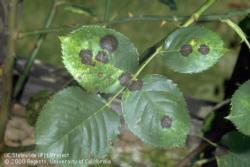Science to the Grower: Mr. Sandman, bring me a dream: Is there a place for silicon in an ornamental IPM program?
by Richard Evans
Silicon, the second-most abundant element on earth (the most abundant is Starbucks), is found in plants but is not usually found on lists of essential plant nutrients. That’s because, in controlled environments, plants can be grown to maturity in the absence of silicon. Plants grown in the less-controlled conditions typical of crop production, however, may profit from the presence of silicon. Researchers have shown that increasing the silicon content of some species makes those plants more resistant to attack by insects and pathogens. This discovery has led to suggestions that agricultural products containing silicon should be included in IPM programs.
Many studies have shown benefits of silicon fertilization of cereal crops like wheat and rice, as well as for greenhouse-grown cucumbers. Unfortunately, the research status of silicon’s efficacy for ornamental crops is not as clear as glass (which, by the way, is usually about 50% silicon). Some researchers have reported benefits from adding supplemental silicon. Gillman and others (2003) added potassium silicate to the potting mix for nursery-grown landscape roses to see what effect it had on development of black spot (Diplocarpon rosae). Daily applications at 100 to 150 parts per million slowed the rate and extent of infection, but the silicon treatment had no effect on defoliation due to black spot, and none of the plants were deemed salable at the end of the experiment. Ranger and others (2009) reported that potted zinnias treated with potassium silicate developed “modest” resistance to green peach aphid — the rate of aphid population growth was about 16% slower in the silicon treatment. These sorts of results aren’t convincing, and other research adds to the doubt. Hogendorp and others (2009a; 2009b) found that adding potassium silicate did not affect citrus mealybug on coleus or fiddleleaf fig, and Moyer and others (2008) reported that potassium silicate did not control powdery mildew on gerbera.

Why the poor results on these ornamentals? There are at least a few reasons. First, the genetic makeup of monocots, and especially grasses and sedges, permits them to take up much more silicon than broadleaf plants do. Silicon is what makes many grasses tough enough to lacerate skin when we run through them. Among broadleaf ornamentals, only zinnia has been shown to rival grasses in its ability to accumulate silicon (Frantz et al., 2008). Second, many soils and potting mixes provide all the silicon a plant can use. Sand is a source of silicon, and potting mixes may gain more from “contaminants” in fertilizers, as well as from naturally-occurring silicon in irrigation water. And finally, silicon may not protect plants by making them physically tough, as was originally supposed. There is now evidence that silicon heightens the ability of some plants to initiate chemical warfare when attacked by pests. Silicon’s effectiveness probably depends more on the genetic makeup of the plant than on its absolute concentration in the plant, and it doesn’t start acting until the pest has attacked (Fauteux et al., 2006).
While it looks like silicon treatments won’t help most ornamental crops now, things may change. Plant scientists are learning how plants control silicon uptake and transport, as well as how silicon affects the formation of chemical defenses in plants. This knowledge may enable ornamental plant breeders to develop varieties that take advantage of the benefits offered by silicon. Stay tuned.
References
Fauteux F, Chain F, Belzile F, Menzies JG, Belanger RR. 2006. The protective role of silicon in the Arabidopsis-powdery mildew pathosystem. Proceedings of the National Academy of Sciences of the United States of America 103:17554-17559.
Frantz JM, Locke JC, Datnoff L, Omer M, Widrig A, Sturtz D, Horst L, Krause CR. 2008. Detection, distribution, and quantification of silicon in floricultural crops utilizing three distinct analytical methods. Communications in Soil Science and Plant Analysis 39:2734-2751.
Gillman JH, Zlesak DC, Smith JA. 2003. Applications of potassium silicate decrease black spot infection in Rosa hybrida 'Meipelta' (Fuschia Meidiland [TM] ). Hortscience 38:1144-1147.
Hogendorp BK, Cloyd RA, Swiader JM. 2009a. Effect of silicon-based fertilizer applications on the reproduction and development of the citrus mealybug (Hemiptera: Pseudococcidae) feeding on green coleus. Journal of Economic Entomology 102:2198-2208.
Hogendorp BK, Cloyd RA, Swiader JM. 2009b. Silicon-based fertilizer applications have no effect on the reproduction and development of the citrus mealybug, Planococcus citri Risso (Hemiptera: Pseudococcidae), feeding on fiddleleaf fig, Ficus lyrata (Warb.). Hortscience 44:1616-1621.
Moyer C, Peres NA, Datnoff LE, Simonne EH, Deng Z. 2008. Evaluation of silicon for managing powdery mildew on gerbera daisy. Journal of Plant Nutrition 31:2131-2144.
Ranger CM, Singh AP, Frantz JM, Canas L, Locke JC, Reding ME, Vorsa N. 2009. Influence of silicon on resistance of Zinnia elegans to Myzus persicae(Hemiptera: Aphididae). Environmental Entomology 38:129-136.
Richard Evans is UC Cooperative Extension Specialist in Environmental Horticulture, Department of Plant Sciences, UC Davis












